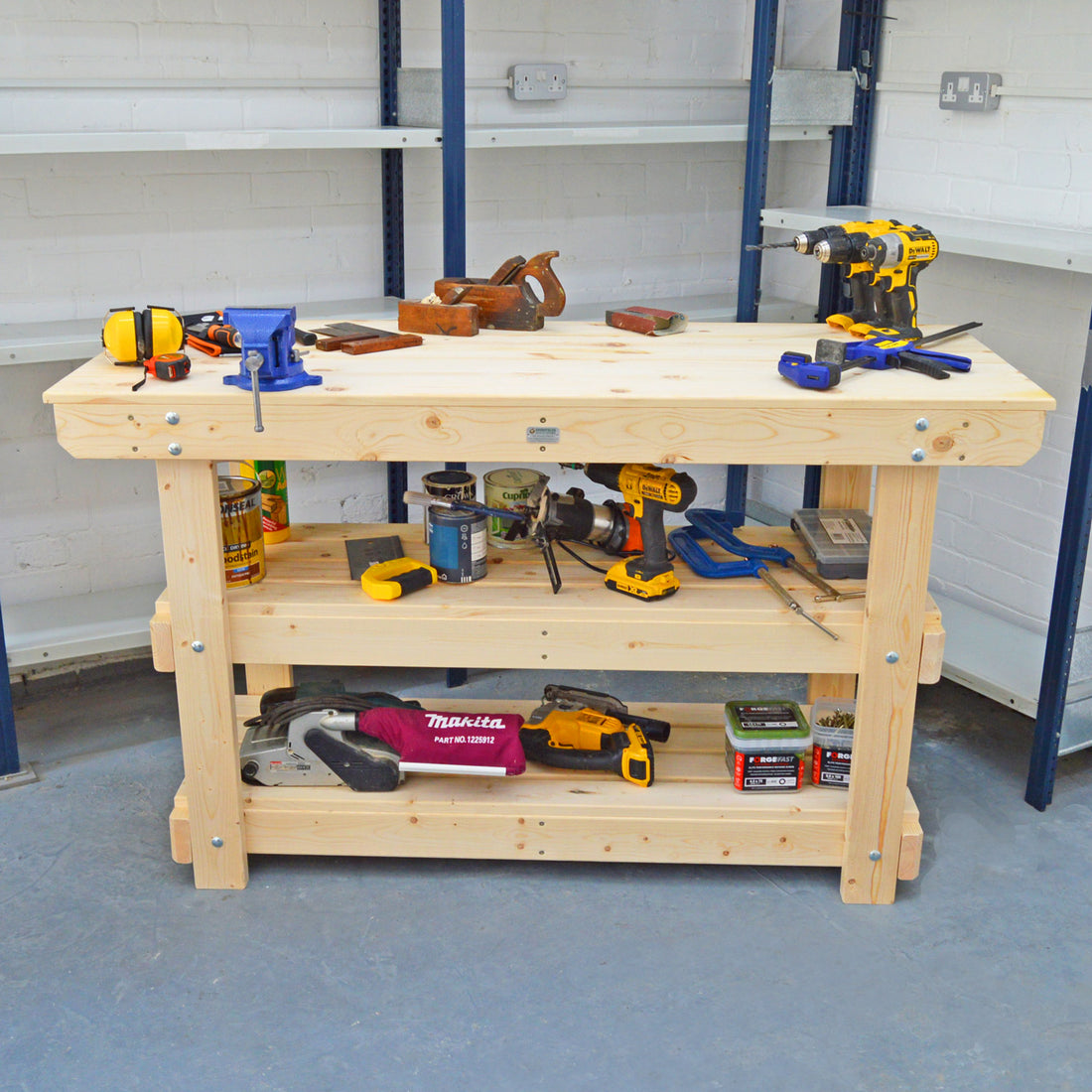
Top 5 Things to Consider When Buying a New Workbench
Share
Whether you're a DIY enthusiast, a hobbyist, or a professional, a solid workbench is key to getting things done right. The right one not only keeps your workspace organised but also boosts your productivity and the quality of your work. With so many options out there, how do you pick the right one for you? Here’s some things to consider:
- Work Surface and Material
The work surface is the most important feature of any workbench. It should be sturdy, durable, and match the kind of work you do. Is it big enough? Does it need a lip? Is it made of the right material? Here’s what we think is important:
- Wood: Perfect for woodworking, a wooden top offers a smooth and durable surface that can handle all manner of activities whilst remaining solid and forgiving.
- Metal: If you're into heavy-duty work like welding or metalworking, go for a metal workbench. These surfaces are tough and impact-resistant, although they can be harder on your tools than wood, they’ll cope better.
- Options: Make sure you’ve thought of everything – if you’re working with finer materials, you’ll benefit from a lip around the edge or a backboard to give you space to store your tools for ease of use.
- Weight Capacity and Stability
How much weight and movement your workbench can handle is worthy of consideration. If you’re working with large and heavy items, the last thing you need is a wobbly bench that moves when under strain. A solid and well-made workbench shouldn’t wobble or tip over under pressure.
- Size and Dimensions
The size of your workbench depends on your space and the projects you'll be tackling. Keep these things in mind:
- Length and Width: A bigger surface is handy if you need room to spread out. But don't forget to measure your space carefully to make sure it fits!
- Height: The right height is key to working comfortably and preventing strain. If it’s too tall or too short, your back and arms will feel it. Also think about whether you might want to use it seated.
- Portability vs. Stability
If you have a dedicated workshop or garage that you know is all yours to permanently furnish, a solid workbench that’s fixed in place is your best bet. If, however, you know you need to move your work from one place to another, you might consider a portable workbench that would be lighter and easier to transport. Many are foldaway and come with locking devices to ensure a stable workspace.
- Extra Features and Accessories
Lastly, think about the extra features that will make your bench comfortable, effective and easy to work with. It’s best to do this when you’re purchasing your bench as these can be added and installed then. Options include:
- Vices: A built-in vice can make all the difference when you’re securing your work for cutting, sanding, or assembling. Look for one that’s easy to adjust and will lock into place.
- Storage: It’s really worth taking a few moments to understand how much storage you might need and the key tools you’ll always want to hand. – one or two shelves… backboard that you can customise to hold your tools and work equipment… maybe with shelves as well.
- Lighting: Some workbenches come with built-in lights, or you can easily add overhead lighting to ensure you get the right amount of light for safety and precision.
- Power Points: If you use electric tools, a workbench with built-in power can save you the hassle of extension leads all over the place. Some might even have USB points.
So….
Picking the right workbench can really make a difference to your quality of work and increase your enjoyment of making and fixing things. Think about what matters most to you—whether it’s durability, portability, or extra features—and choose a workbench that suits you best. Take your time really thinking about what you’ll be using it for most, and make sure you’ve considered surface, weight capacity, size, portability, and any additional features. With a little extra thought, you’ll end up with a workbench that should last you a lifetime.
